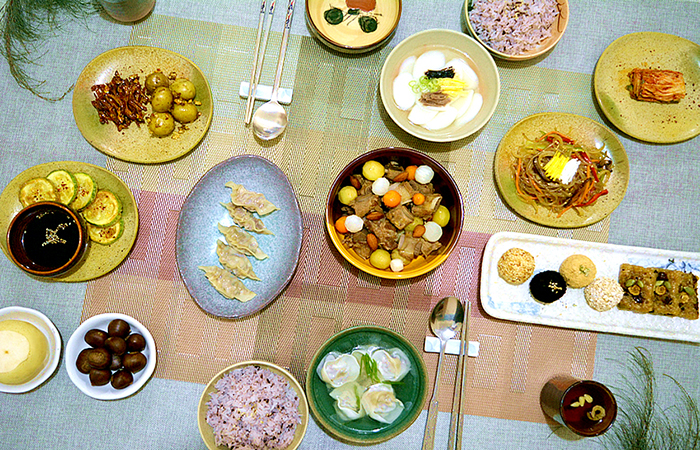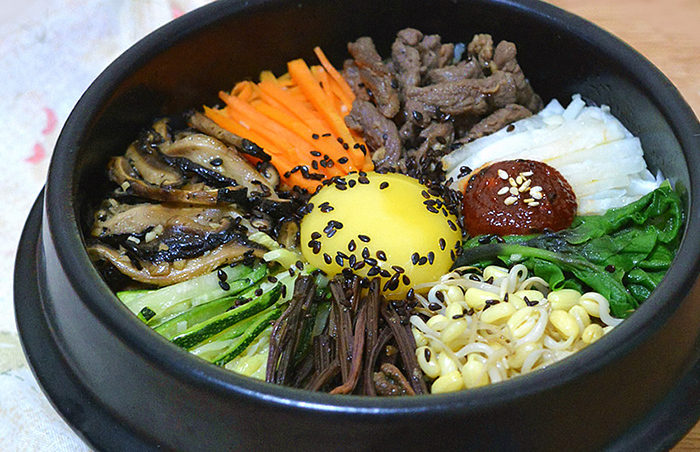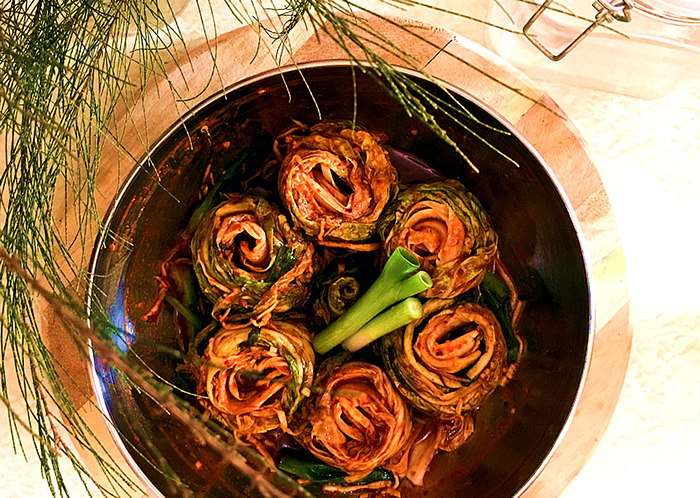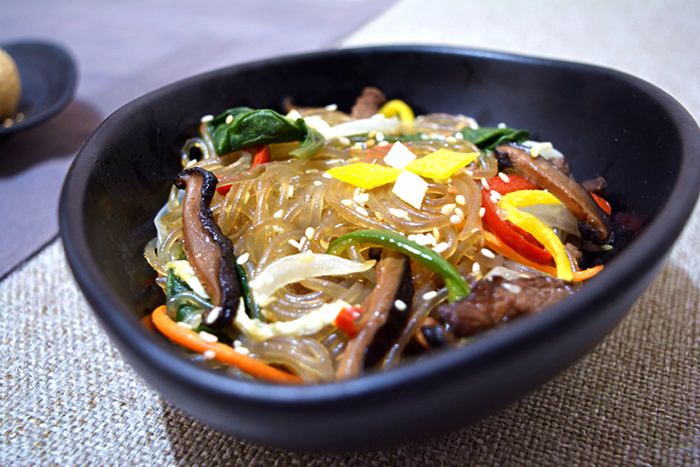View this article in another language
- 한국어
- English
- 日本語
- 中文
- العربية
- Español
- Français
- Deutsch
- Pусский
- Tiếng Việt
- Indonesian
|
Korea.net Honorary Reporter John Paul Vergonia from the Philippines runs Hanbap, a Korean lunchbox delivery venture in Pangasinan Province. Here he shares his love for Korean cuisine and his passion to promote Korea through his cooking. |
By Korea.net Honorary Reporter John Paul Vergonia from the Philippines
Photos = John Paul Vergonia

The table setting for the recent Seollal Lunar New Year's celebration in which tteokguk rice cake soup, galbijjim braised beef short ribs and manduguk dumpling soup were the centerpieces of the holiday feast.
I'll eat well! Thank you for the food. (잘 먹겠습니다!)
This is the first expression commonly used and how people in Korea typically begin a meal. With all of the food carpeted on the table at once, this implies “you have to eat well” and is used to express appreciation to someone who prepared the food for the meal.
Every day, three times a day, people in Korea always pay attention to the combination of nutrition and the set of food prepared on the everyday table. With the steamed rice and kimchi as staples of a Korean diet, they are usually accompanied with savory, well-seasoned, spicy yet refreshing, deliciously healthy and delicately-prepared dishes that will surely be loved by the whole family.
With the simplicity of Korean dining and the harmony of colors that are served at the Korean table, it's just a few of the reasons why I admire Korean food's style and philosophy, which has influenced me a lot in every way, most especially in serving good and beautiful food for my family.
Through the years that I've been dedicating myself to learning Korean cooking, it gave me deep joy as I was able to prepare various foods for our dining table where everyone in the family liked all of them as much as I usually did.
Preparing Korean food for our everyday table gives me satisfaction and delight. Although the food being served seems unusual and beyond the ordinary, behind every dish are carefully selected ingredients, time spent in preparing them, effort to make them as perfect and authentic as possible, and they are beautifully plated and ready to satisfy the palate of many guests.

A bowl of delicately prepared bibimbap mixed rice with lots of flavorful toppings nested over freshly-steamed white rice.
One of the first Korean dishes I learned to cook was bibimbap mixed rice, Korea’s most popular and representative food, after kimchi. Bibimbap mixed rice is prepared with a bowl of freshly-steamed white rice as the base and topped with neatly arranged sautéed meats and seasoned vegetables. It's then typically mixed all together along with the gochujang red pepper paste to add flavor before it is eaten. I considered bibimbap to be a family's favorite dish that, despite the fact that it can take ample time to prepare it, it's always worth the effort, as your family will surely love not just one but another bowl of it. With bibimbap prepared as enticingly as possible, showcasing Korean cuisine's harmonies of flavors, the variety of color adds to the charm of the basic rice bowl.
Korean cuisine is beyond merely delicious, as it is also a combination of good and healthy food. Bound in the philosophy that food and medicine are of the same, this is just another reason to love everything about the cuisine. Samgyetang ginseng chicken soup is a famous dish that well-represents this philosophy of food. It is a warm, nutritious soup usually prepared for hot summer days, as it is believed by some to promote "health" during the summer. Another interesting thing about the Korean table, besides the set of delicious healthy food, is the array of tempting side dishes.

Freshly-seasoned, table-cut cabbage kimchi ready to be ferment for days in a breathing jar.

Sweet and savory japchae noodles are stir-fried with meat and vegetables.
Banchan, the generic term for all side dishes, is usually served at the center of the table to be shared by everyone. You will feel surprised with lots of side dishes when dining at a Korean table where you can expect many of them to be main dishes as well. I have made several side dishes, in addition to the family's all-time favorite, kimchi. One side dish that charmed me the most is fried myeolchi dried anchovies. I first tried them in Seoul. Every now and then when serving Korean food I make sure that we have the sweet yet spicy side dish on our table. Moreover, kong namul seasoned soybean sprouts, gamja jorim braised potatoes, gaji bokkeum stir-fried eggplants, various savory pancakes, such as spring onion pajeon savory cakes and zucchini fritter hobak jeon, as well as japchae stir-fried glass noodles, are all ones that I like to serve and you can pair them all perfectly with just a bowl of rice.
wisdom117@korea.kr
* This article is written by a Korea.net Honorary Reporter. Our group of Honorary Reporters are from all around the world, and they share with Korea.net their love and passion for all things Korean.